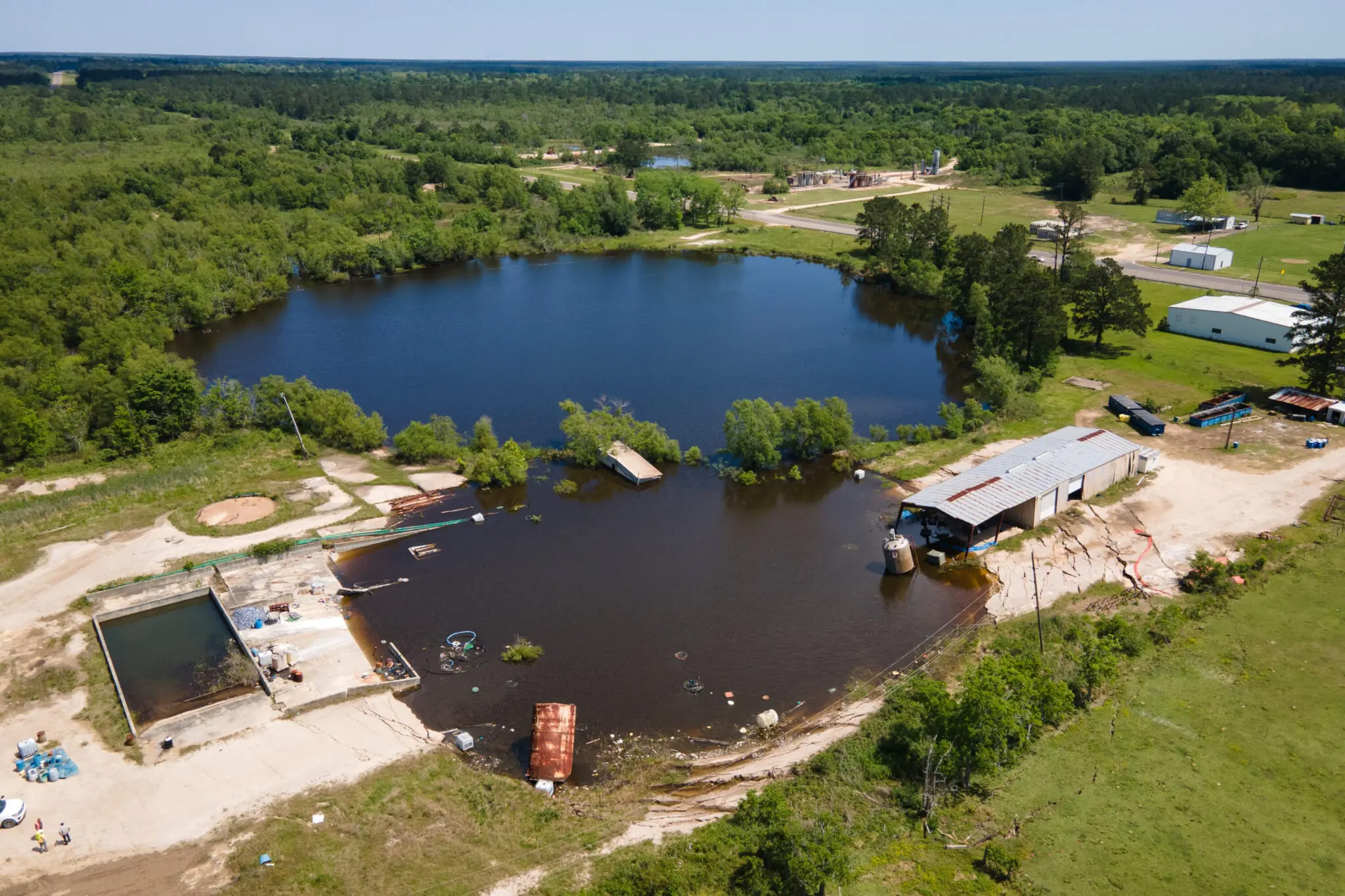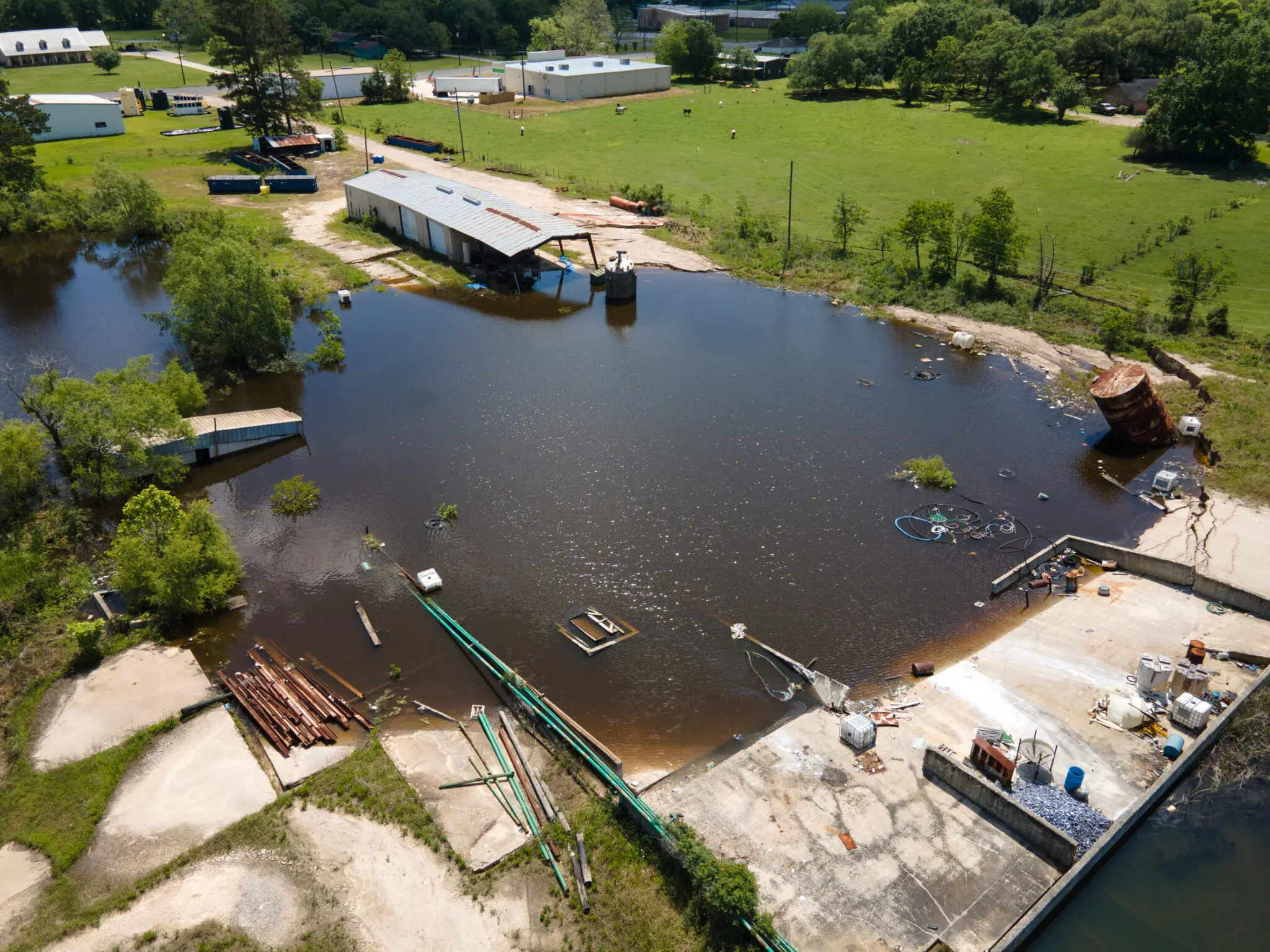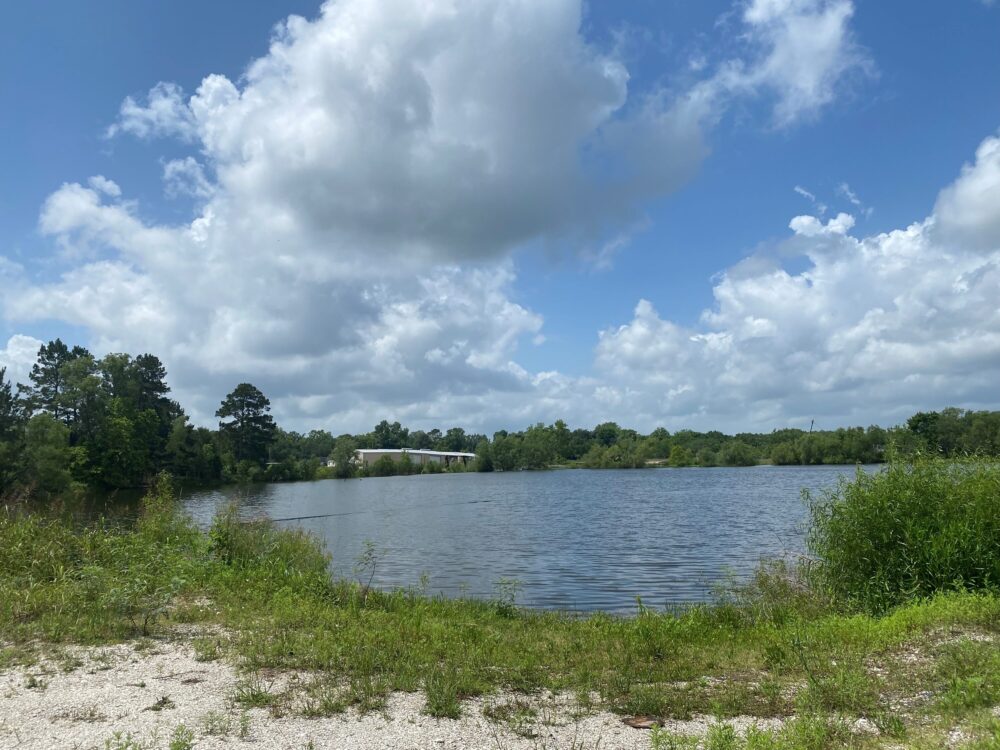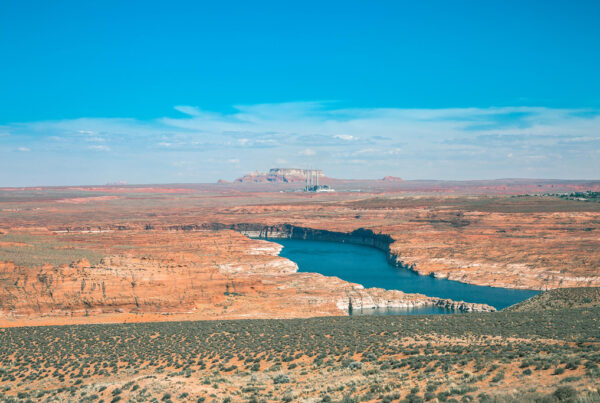In 2008, a massive sinkhole formed in Daisetta, a small town about an hour east of Houston. Stretching 600 feet across and 75 feet deep, it’s one of the largest sinkholes in the state.
After 15 years of stability, residents and researchers thought it wouldn’t expand anymore. Then last month, another giant sinkhole formed next to the first one, renewing concerns and curiosity. Researchers say former oil and gas activity may be exacerbating the area’s already sinkhole-prone geography.
“There’s always fear right at the beginning, obviously, when the sinkhole opens up, it’s not a comfortable feeling,” said Tim Bartram, a Daisetta resident and the superintendent of Hull-Daisetta ISD. “You don’t know where it’s going to go, how it’s going to move, how large it’s going to get.”
Bartram moved to Daisetta about five years ago, and said stories of the day the first sinkhole opened up in 2008 have become town lore.
“They said the ground makes a lot of noise,” Bartram said. “It kind of sounds a bit like thunder, or concrete cracking.”
The collapsed ground pulled in trucks, farm equipment, oil tanks and trees. When the first sinkhole formed there were concerns it would expand and cause damage to the highway or nearby high school.


















